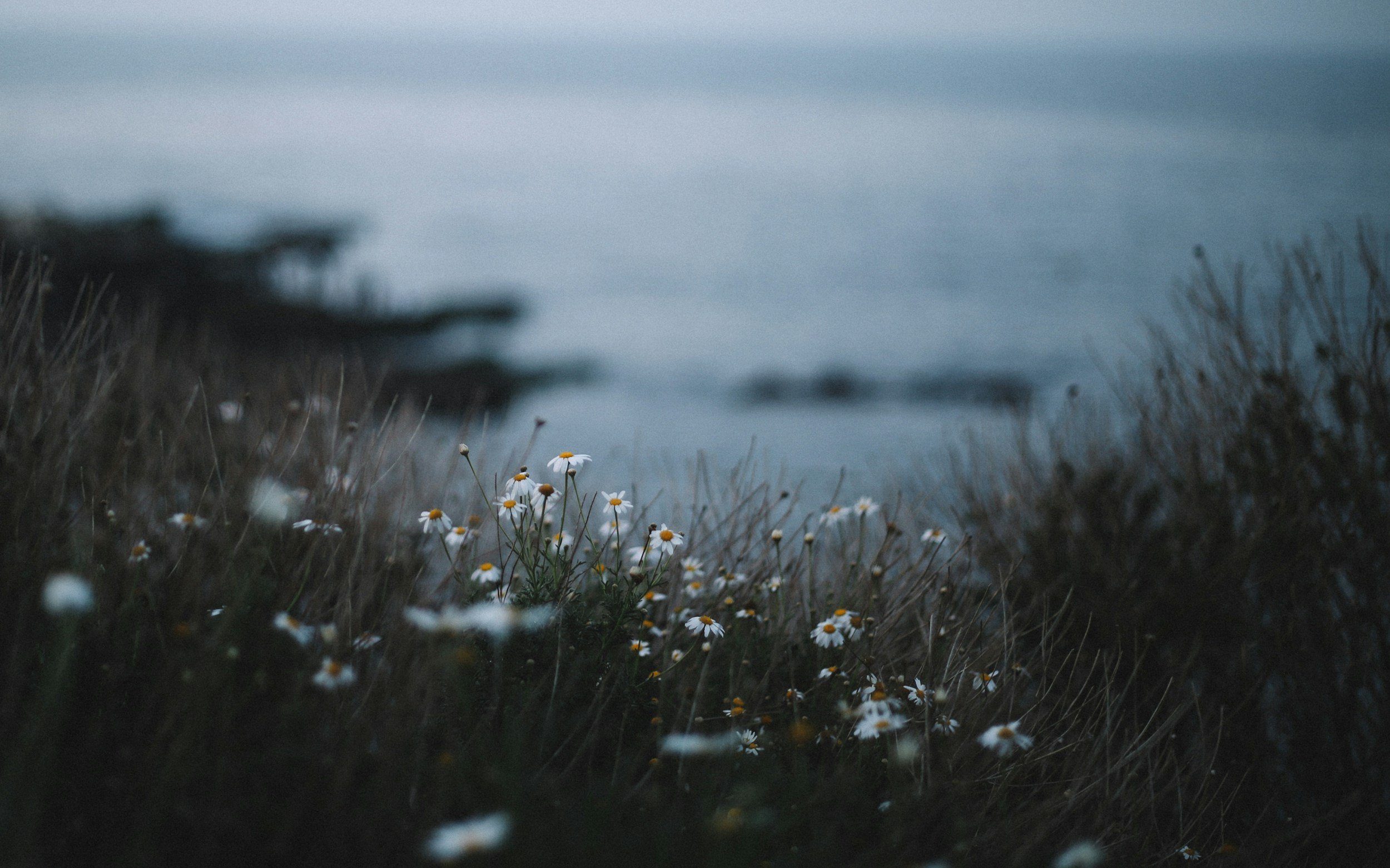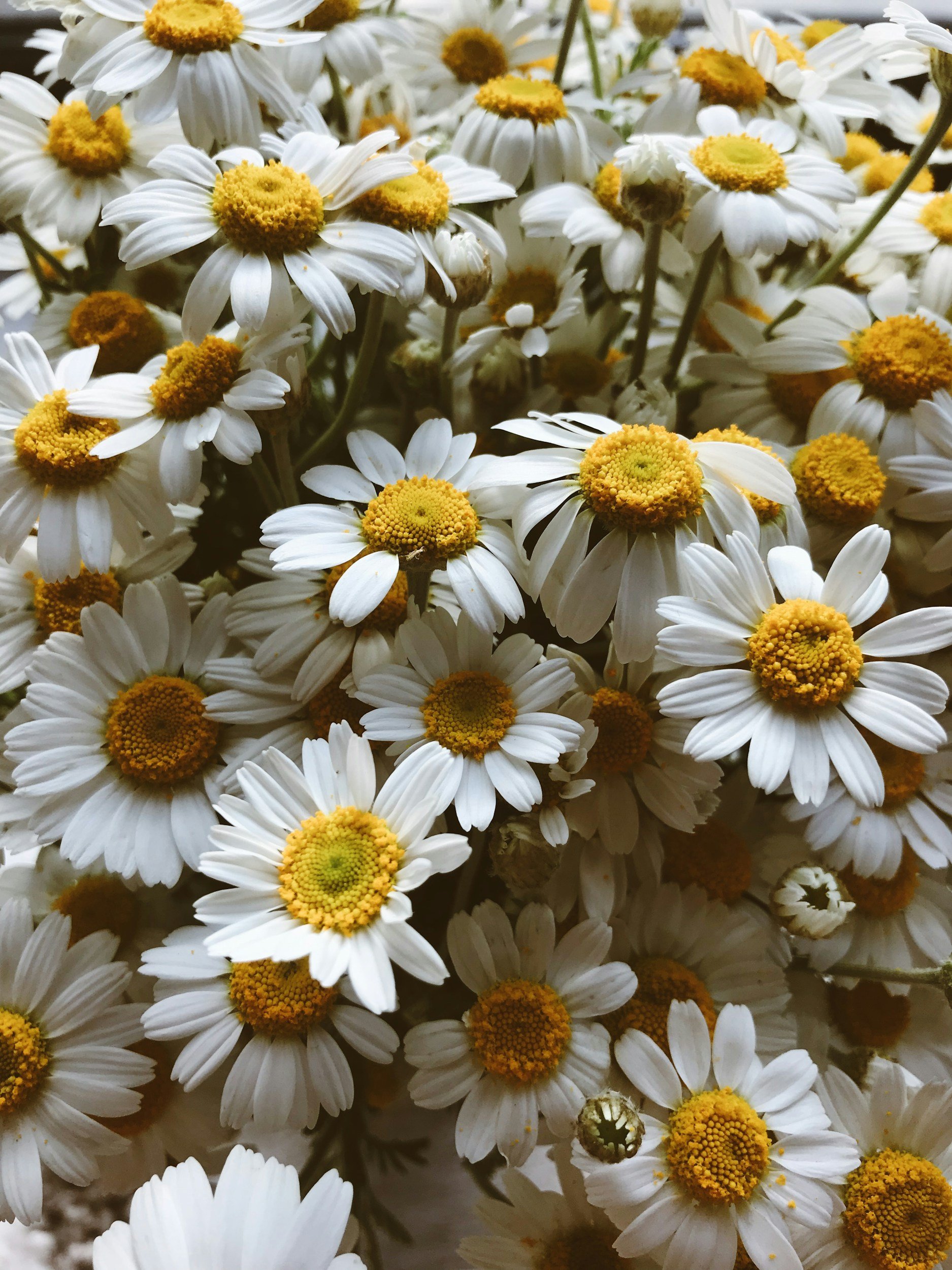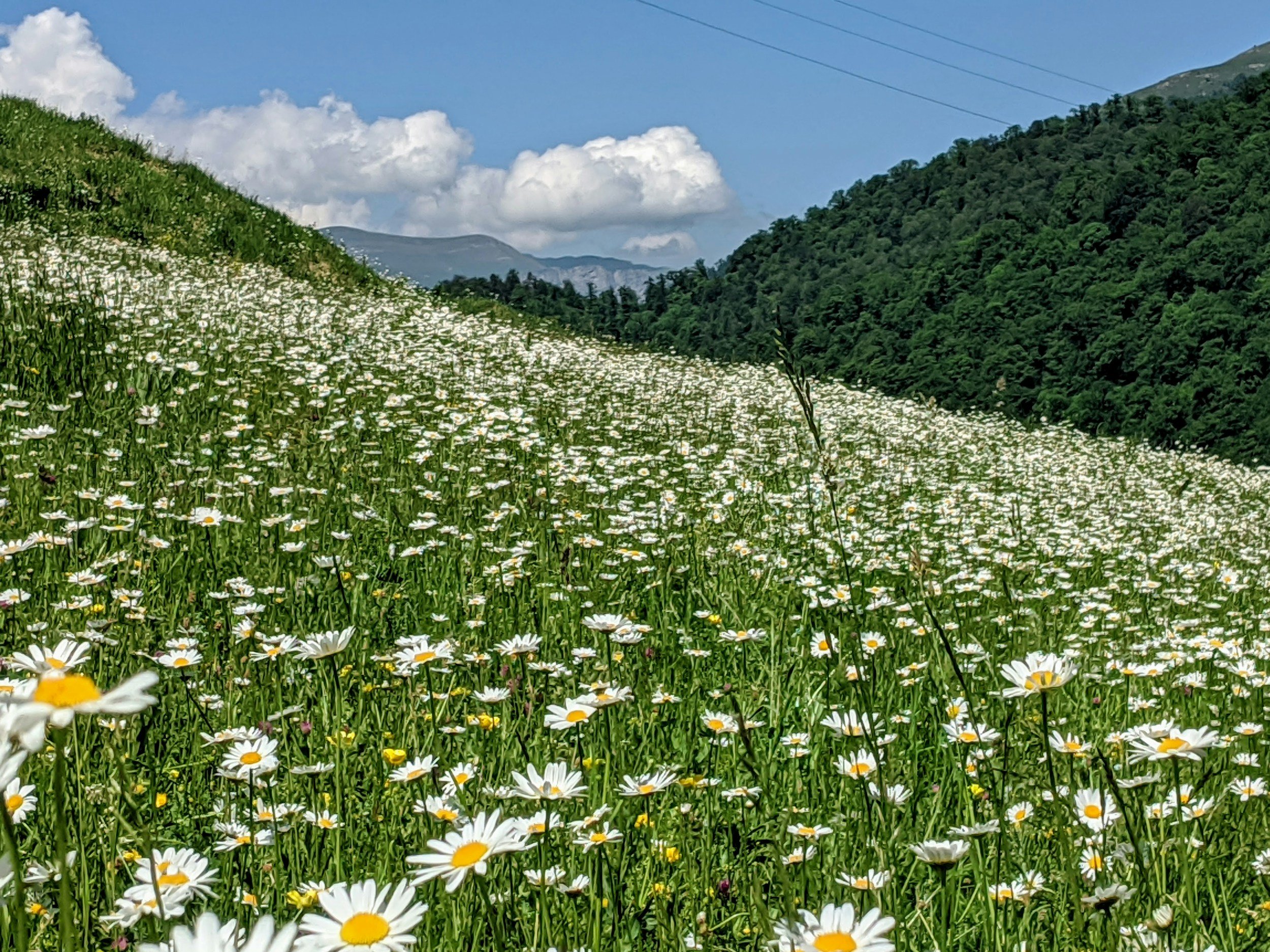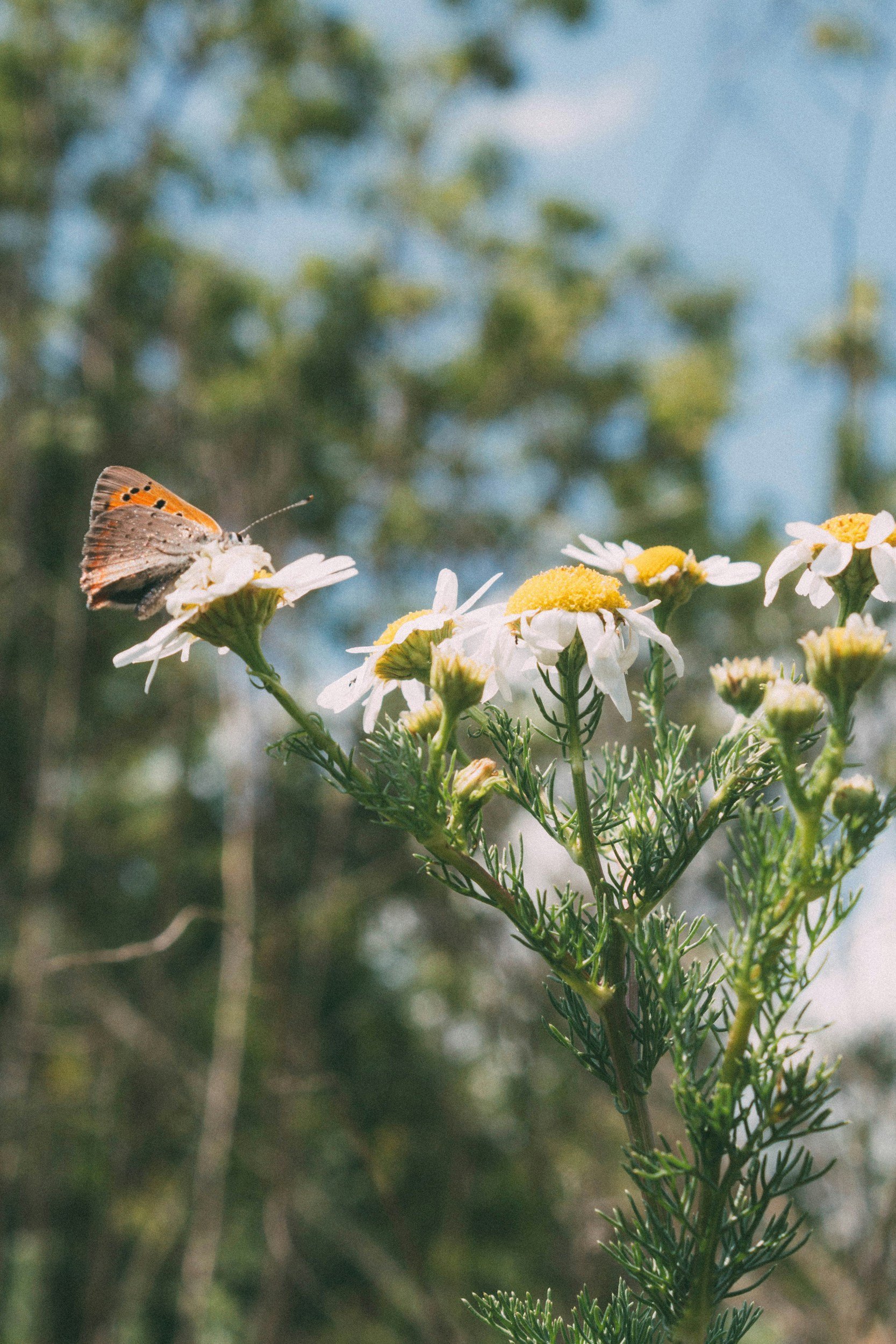
Chamomile
Chamomile
(German: Matricaria chamomilla)
(Roman: Chamaemelum nobile)
Chamomile is actually two close cousins: German chamomile (Matricaria chamomilla) and Roman chamomile (Chamaemelum nobile). Both are gentle, aromatic relaxants for tense digestion, irritability, and trouble settling, but German is the one most used in teas and anti-inflammatory skin work, while Roman is a little more distinctly bitter and spasm-relieving. Together, they’re classic “calm the gut, calm the mind” herbs.
Plant family
Asteraceae
Parts used
Flos (Flower)
Typical forms of prescription
Teas
Tinctures
Essential oil (topically)
Dosage:
Tincture (1:2): 20–40 ml pw; Dried herb: 6–12 g pd.
Chamomile (Matricaria chamomilla / Chamaemelum nobile) - Clinical Snapshot
Primary Actions
Anti-inflammatory
Antispasmodic
Anxiolytic
Digestive
Carminative
Diaphoretic
Mild analgesic
Vulnerary
Primary Indications
Insomnia
Digestive issues (especially with pain)
Travel sickness
Anxiety & nervous irritability
Dermatitis/eczema
Upper respiratory tract inflammation
Fever
Hay fever
⚠️ Cautions / Safety ⚠️
Asteraceae allergy – may cause sensitivity or reaction
Matricaria chamomilla
Phytochemistry and Pharmacology
-
Action: Strongly anti-inflammatory, wound-healing.
Use: Matricin is converted into chamazulene during distillation. It is especially beneficial for inflammatory conditions affecting the skin, gut, and respiratory system.
-
Action: Anti-inflammatory, carminative, antimicrobial.
Use: These oils are potent inflammation-soothers, making German Chamomile ideal for skin conditions, gut inflammation, and irritated mucous membranes. Chamazulene (formed during distillation from matricin) gives the oil its blue colour and contributes strong anti-inflammatory effects.
-
Action: Antioxidant, anti-inflammatory, antispasmodic.
Use: These compounds help reduce allergic responses, calm spasms (especially in the digestive tract), and protect cells from oxidative stress.
Chamaemelum nobile
Phytochemistry and Pharmacology
-
Action: Antispasmodic, carminative, calming.
Use: These esters are muscle relaxants that calm digestive spasms, menstrual cramps, and tension headaches. The oil has a softer, more floral profile than German Chamomile.
-
Action: Antioxidant, mild sedative, anti-inflammatory.
Use: These contribute to Roman Chamomile’s nervine action, supporting sleep, reducing anxiety, and helping to manage oxidative stress in the nervous and digestive systems.
-
Action: Mild antispasmodic, vasodilatory, anti-inflammatory.
Use: These help relieve muscle tension, improve peripheral circulation, and reduce discomfort from stress or inflammation.
Traditional uses
Roman Era
Roman chamomile was used for its anti-inflammatory and calming properties. It was brewed as tea to aid digestion and relaxation, and its essential oil was applied to treat skin irritations.
Anglo-Saxon Tradition
Chamomile was valued for its healing properties and was considered one of the "Nine Sacred Herbs" in the Middle Ages.
Many medicinal uses are still in use today.
Clinical Description
Roman and German Chamomile are two closely related species used by herbalists. They are valuable herbs for both children and adults.
German chamomile is the herb sold as ‘chamomile tea’ in shops. It is the sweeter-flavoured one to create gently soothing bedtime drinks and digestives.
The Roman is intensely bitter and used more for acute digestive issues and inflammation. Both herbs are bitter due to both essential oil content and sesquiterpene lactones.
Both can be used as digestive tonics, treating everything from hyperacidity to flatulence, mild indigestion to gastritis. Chamomiles are also used topically to soothe rashes and eczema and in washes and herbal creams.
The essential oil chamazulene is a potent anti-inflammatory and deep blue (hence the name, which is related to ‘azure’). The colour transformation occurs during steam distillation of the German flowers. This essential oil is added to creams for inflammatory skin conditions such as eczema.
Cultivation/Harvesting
Easily sown from seed. Pick flowers from stems or ‘comb’ them off the plant with a berry picker.
Key Botanical Features of Camomile (Matricaria chamomilla / Chamaemelum nobile)
Growth
German Chamomile: Annual, upright growth, reaching 30–60 cm (12–24 inches) tall.
Roman Chamomile: Perennial, low-growing, creeping habit, around 10–30 cm (4–12 inches) tall.
Stem
German Chamomile: Slender, erect, and branching.
Roman Chamomile: Spreading, woody at the base, forming dense mats.
Leaves
Type: Alternate, feathery, finely divided.
German Chamomile: Light green, delicate, and thread-like.
Roman Chamomile: Darker green, slightly thicker and more compact.
Flowers
Type: Small, daisy-like composite inflorescence.
Size: 1–3 cm (0.4–1.2 inches) in diameter.
Ray Florets: White petals surrounding the centre.
Disk Florets (Centre):
German Chamomile: Yellow, conical, and hollow inside.
Roman Chamomile: Yellow, domed, and solid inside.
Fragrance: Sweet, apple-like scent (more pungent in Roman Chamomile).
Blooming Period: Late spring to early autumn.
Fruits & Seeds
Fruit Type: Small, elongated achenes.
Dispersal: Wind and self-sowing.
Roots
German Chamomile: Fibrous root system, shallow and spreading.
Roman Chamomile: Rhizomatous roots, allowing it to spread and form ground cover.
Habitat & Growth Conditions
Climate: Thrives in temperate regions.
Soil: Prefers well-drained, sandy, or loamy soil.
Sunlight: Full sun to partial shade.
Distribution: Native to Europe and Western Asia, widely cultivated and naturalised worldwide.
Sustainability/Conservation
Easily cultivated, abundant.






Sources
Bartram, T. (1998). Bartram’s encyclopedia of herbal medicine. Constable.
Fisher, C. (2018). Materia medica of western herbs (Rev. ed.). Aeon Books.
Hedley, C., & Shaw, N. (2020). A herbal book of making and taking. Aeon Books.
Hoffmann, D. (2003). Medical herbalism: The science and practice of herbal medicine. Healing Arts Press.
McIntyre, A. (2019). The complete herbal tutor (Revised & expanded ed.). Aeon Books.
Royal Botanic Gardens, Kew. (n.d.). Plants of the World Online. https://powo.science.kew.org/
Mills, S., & Bone, K. (2013). Principles and practice of phytotherapy: Modern herbal medicine (2nd ed.). Churchill Livingstone; Elsevier.
Barnes, J., Anderson, L. A., & Phillipson, J. D. (2013). Herbal medicines (3rd ed.). Pharmaceutical Press.
Benzie, I. F. F., & Wachtel-Galor, S. (Eds.). (2011). Herbal medicine: Biomolecular and clinical aspects (2nd ed.). CRC Press; Taylor & Francis.
Evans, W. C. (2009). Trease and Evans’ pharmacognosy (16th ed.). Elsevier.
Disclaimer: This page is for educational purposes only. Consult a qualified medical herbalist before using herbs, especially during pregnancy, when trying to conceive, while breastfeeding, for medical conditions, or with children.
Read the full disclaimer → Medical Disclaimer.




